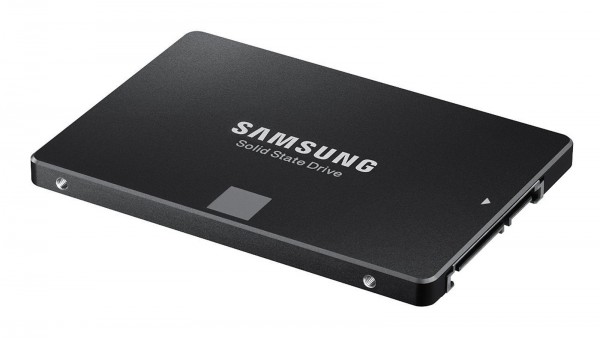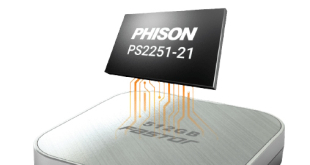Samsung has been raising the bar when it comes to the amount of storage it can cram into its consumer SSDs. Last year the company began selling 2TB versions of its popular 850 Evo drive and now this year, the company has doubled up on storage again and will begin offering a 4TB 850 Evo, though as you might imagine, it is quite pricey.
Samsung's new 4TB 850 Evo doesn't do much to push current speeds, offering up 540MB/s sequential read and 520MB/s sequential write speeds. However, with 4TB of storage on-board, you might be tempted to completely replace that old secondary hard drive.
As you might expect, reaching higher SSD capacities also means reaching higher price points. The 4TB Samsung 850 Evo will launch at $1,500 in the US so it is a serious investment even for enthusiasts. That said, this is still good news, perhaps in the next few years high-capacity SSDs will finally become affordable for many.
KitGuru Says: These days, making the choice to go with an SSD over a hard drive still means compromising on storage for speed more often than not. However, with drives like this starting to hit the market, we may not have to compromise for much longer. How much SSD storage do you guys have in your system? Would you replace your hard drive entirely if larger SSDs like this were affordable?
 KitGuru KitGuru.net – Tech News | Hardware News | Hardware Reviews | IOS | Mobile | Gaming | Graphics Cards
KitGuru KitGuru.net – Tech News | Hardware News | Hardware Reviews | IOS | Mobile | Gaming | Graphics Cards




I would definitely go full SSD if large drives were affordable. In fact 1 TB would be enough for me to do so. And I would do so even if it still cost a little more than a 1 TB HDD.
A must buy for me, when it reaches $200. 🙂
I basically earn around $6000-$8000 /every month for freelance jobs i do at home. For those of you who are prepared to do easy freelance work for few h each day at your house and make good profit while doing it… Try this gig SELF90.COM
I only have ssd in my pc. External drives are just fine for storage..speed is more important
Possibly next year, Intel may deliver 15 terabyte SSDs to the market using 3D X-Point technology, jointly developed with Micron. This technology is expected to be much faster than current-gen SSDs and more durable as well. Beyond that, Intel and Micron are pushing to mount 3D X-Point memory as a non-volatile low-energy-consumption option for direct CPU memory access at speeds rivaling low-end DRAM.
It’s a bird in the bush, of course, not in hand, and pricing remains to be determined (expect it to be costly). We can’t buy that today. But it seems it’s on the way.
4 TB SSDs may end up going obsolete pretty quickly. But if your need is now and you can’t wait, and if you have the bucks to spend, then Samsung’s new SSD looks mighty appealing.
What about SLC SSDs? I thought they were faster and last longer what with 100,000 writes unlike MLC at 10,000 and TLC at 1,000.
You aren’t comparing these older technologies to 3D X-Point. I recommend you read up on it.
3D X-Point is as fast as low-to-mid range DRAM if it has a memory bus connection (release date uncertain). In an SSD configuration, its speed is limited only by the bandwidth of the connection. It’s point-addressable, unlike older technologies which are block read and block write, which makes them a lot less durable. It uses less power than any current storage tech, has better durability and has better density. It doesn’t use standard transistor designs; it stores data as resistance voltages at crossing points (nonvolatile). We may see, in second and third gen products, more voltage values possible per point, which will increase storage density even more without affecting power consumption. Intel and MIcron have a game-changer on their hands, and they know it.
The main sticking point may be cost. We don’t know how Intel and Micron will price it.
“It uses less power than any current storage tech, has better durability and has better density. ”
That sounds pretty good. Unfortunately, this is a capitalist world and big money enterprises are far more likely to get access to it than us average Joe blow consumers. If SLC nand SSDs could last 100k writes which translates to 50 to 150 years longevity for consumers, then 3D X Point which is supposed to be far superior is probably going to be made cost prohibitive by Intel and Micron. Remember how these same big corporations Intel, Samsung, and other big name SSD manufacturing corporations got away with making and keeping SLC nand SSDs cost prohibitive until they watered it down to MLC and later SLC?
Intel’s business model has aggressively pursued better tech for the money year after year, driving the cost-capability ratio in a favorable direction for both enterprises and consumers.
So, yeah, 3D X-Point is going to make a splash first at the enterprise level. But it’s coming to consumers, too, and I don’t think Intel or Micron are going to sit on it for long at the high end. Consumers have wallets, too. And the tech is so much better than anything now on the market, they’d be idiots not to take advantage. 3D X-Point is disruptive.